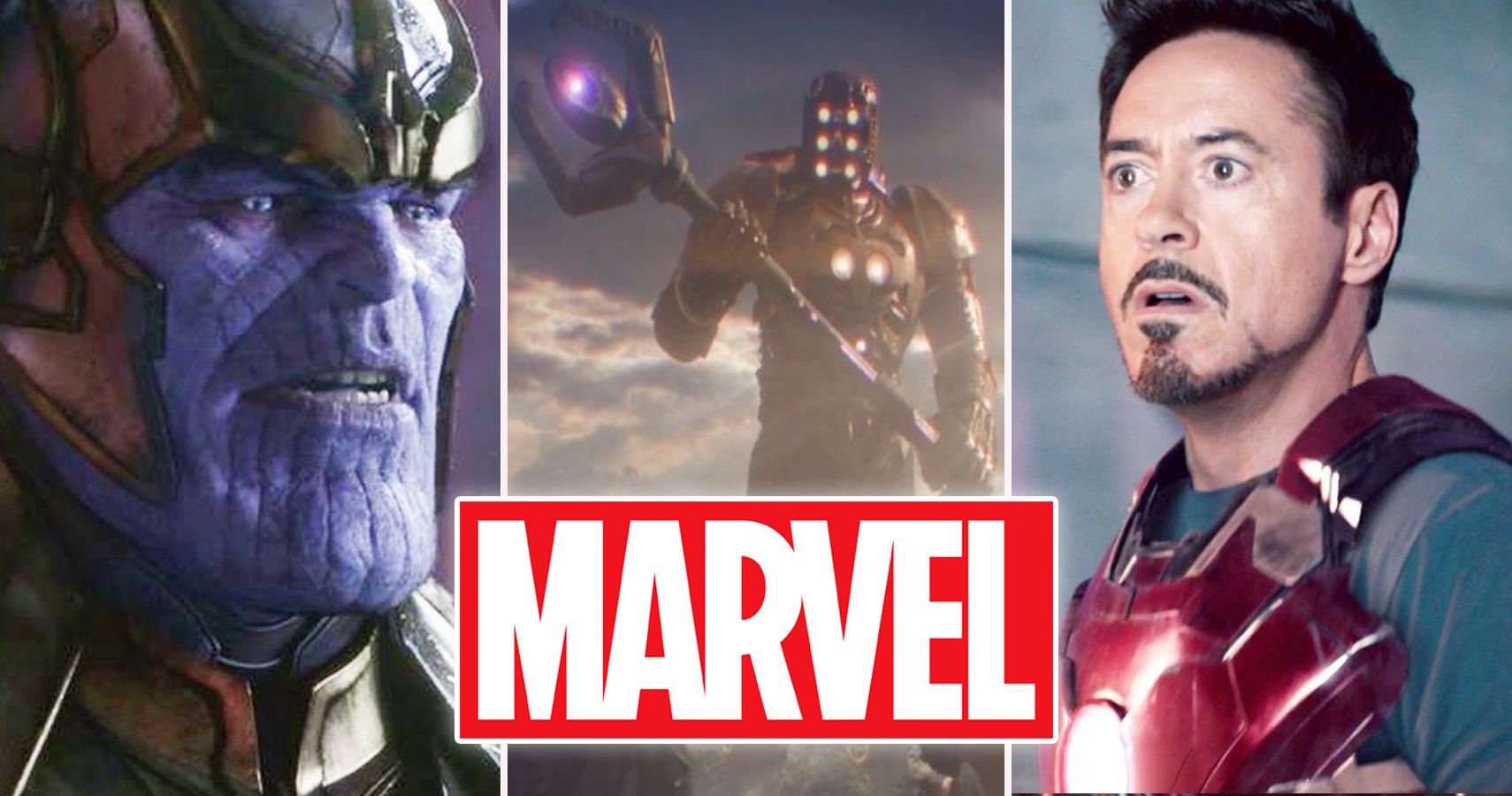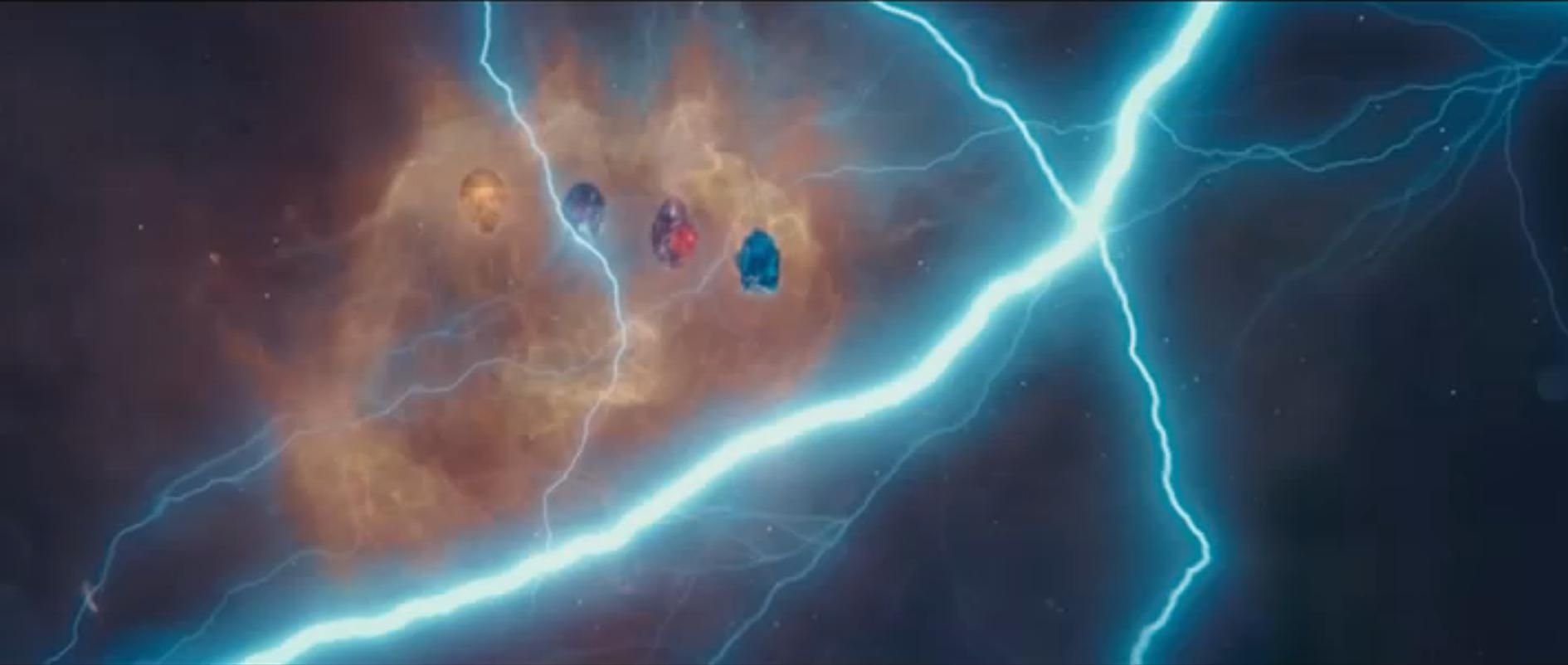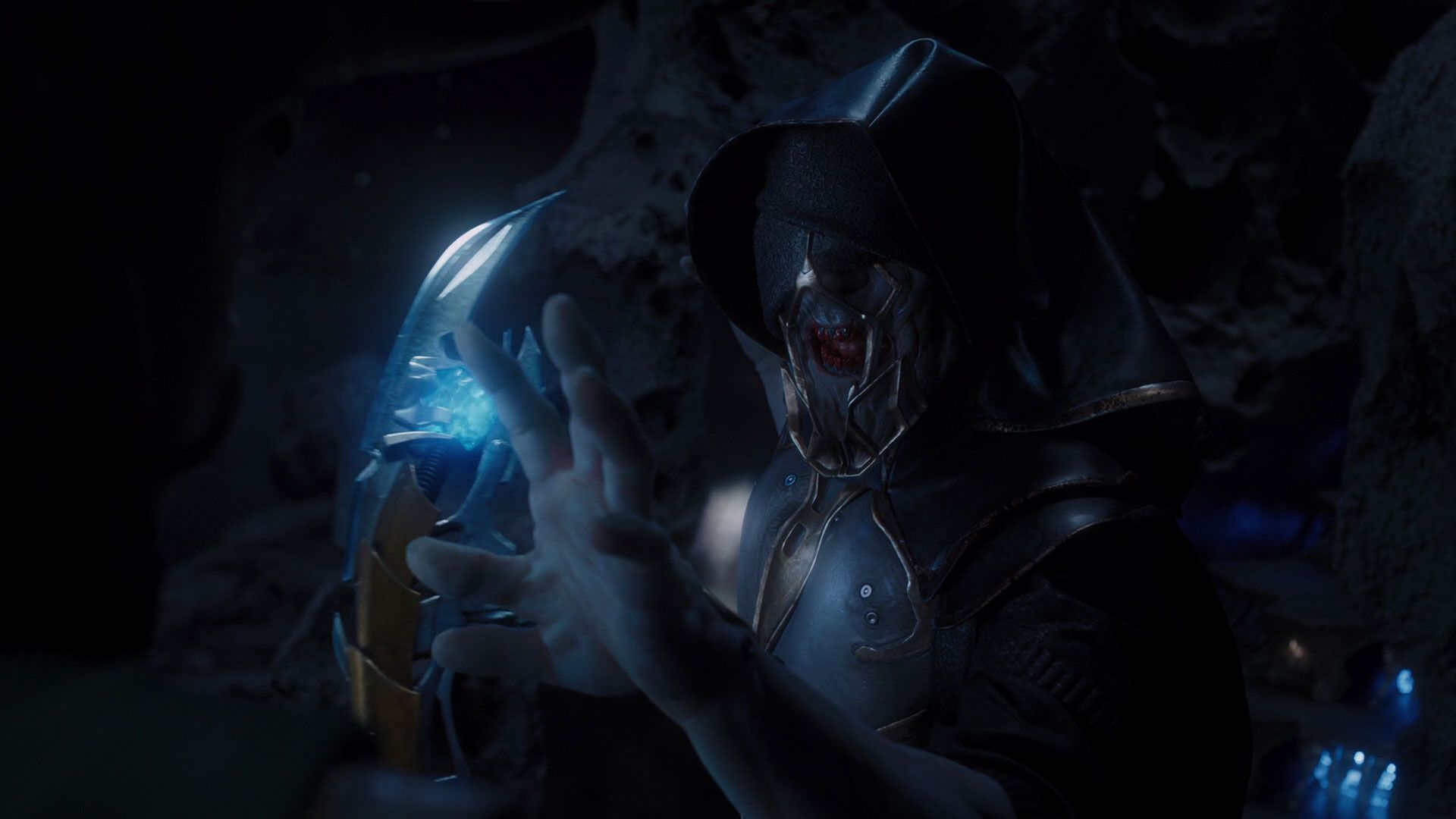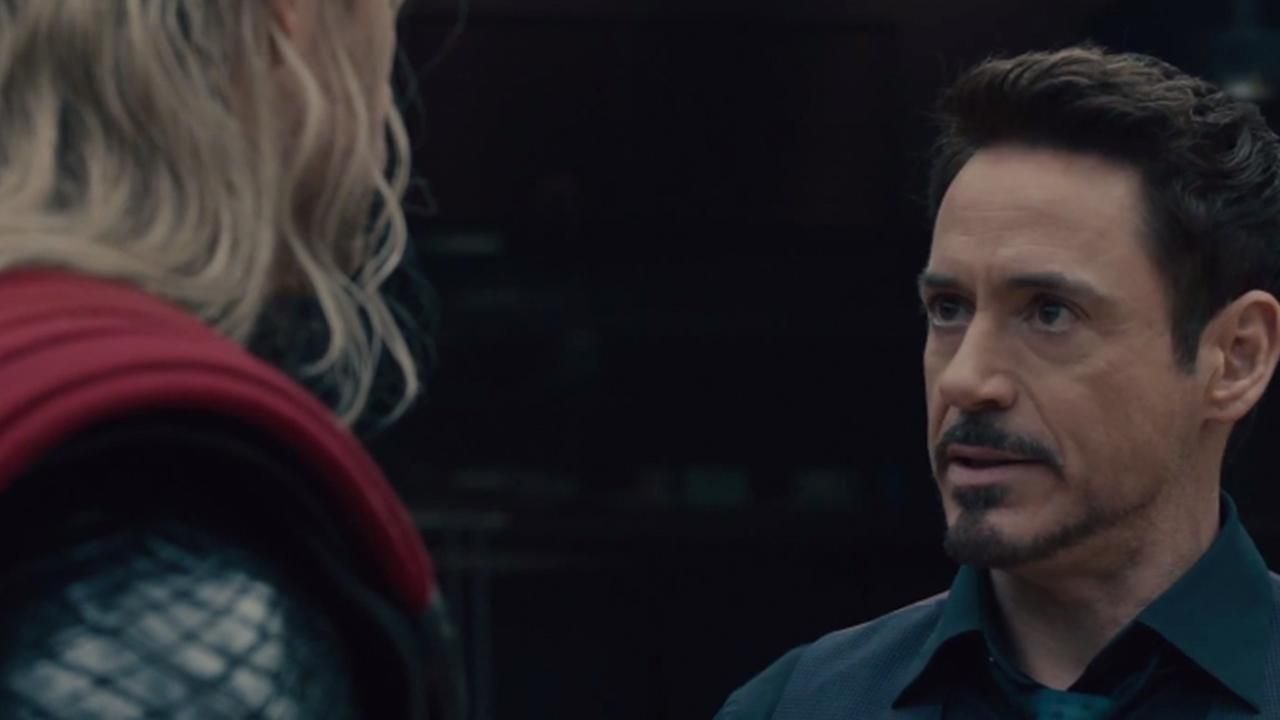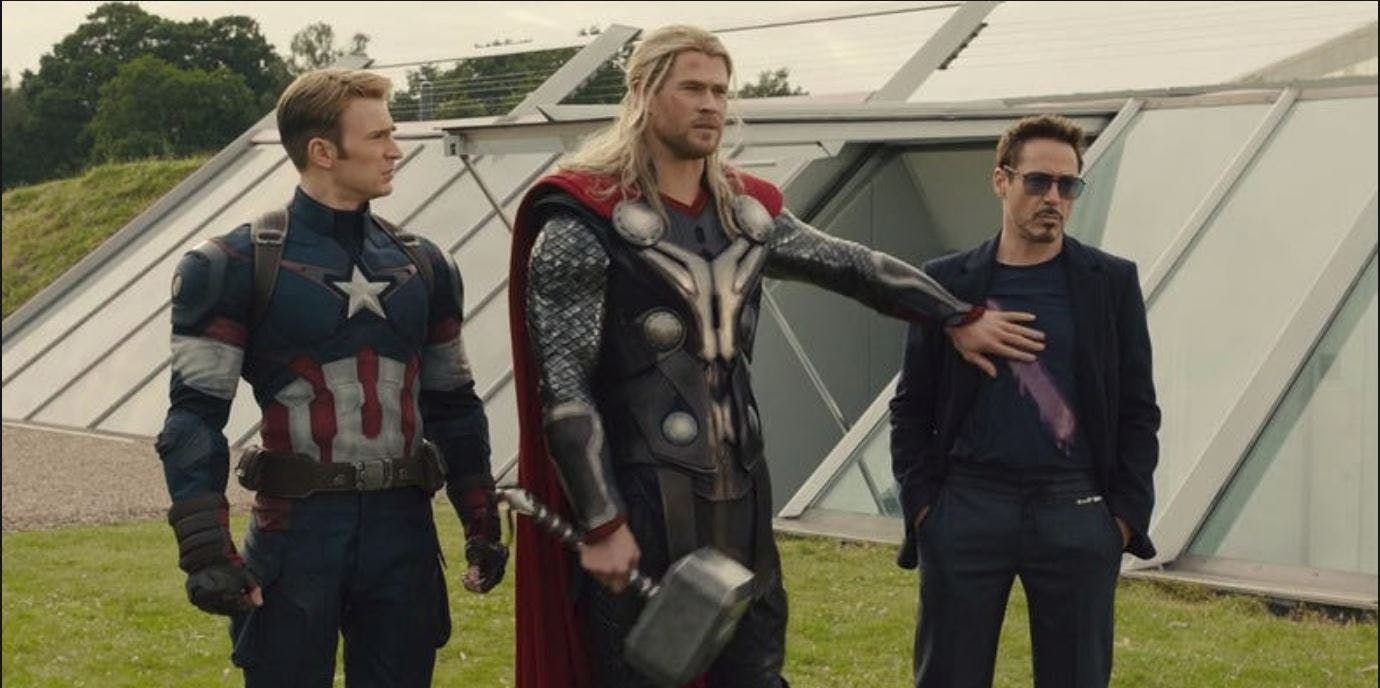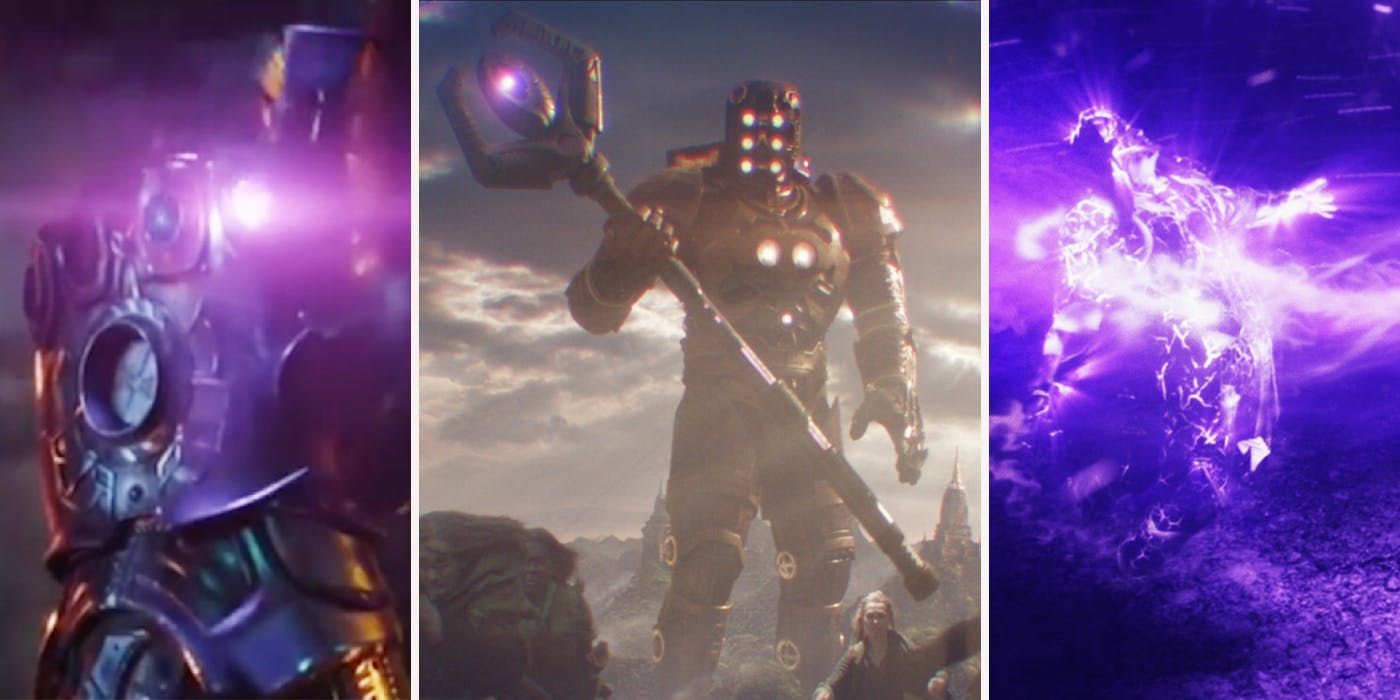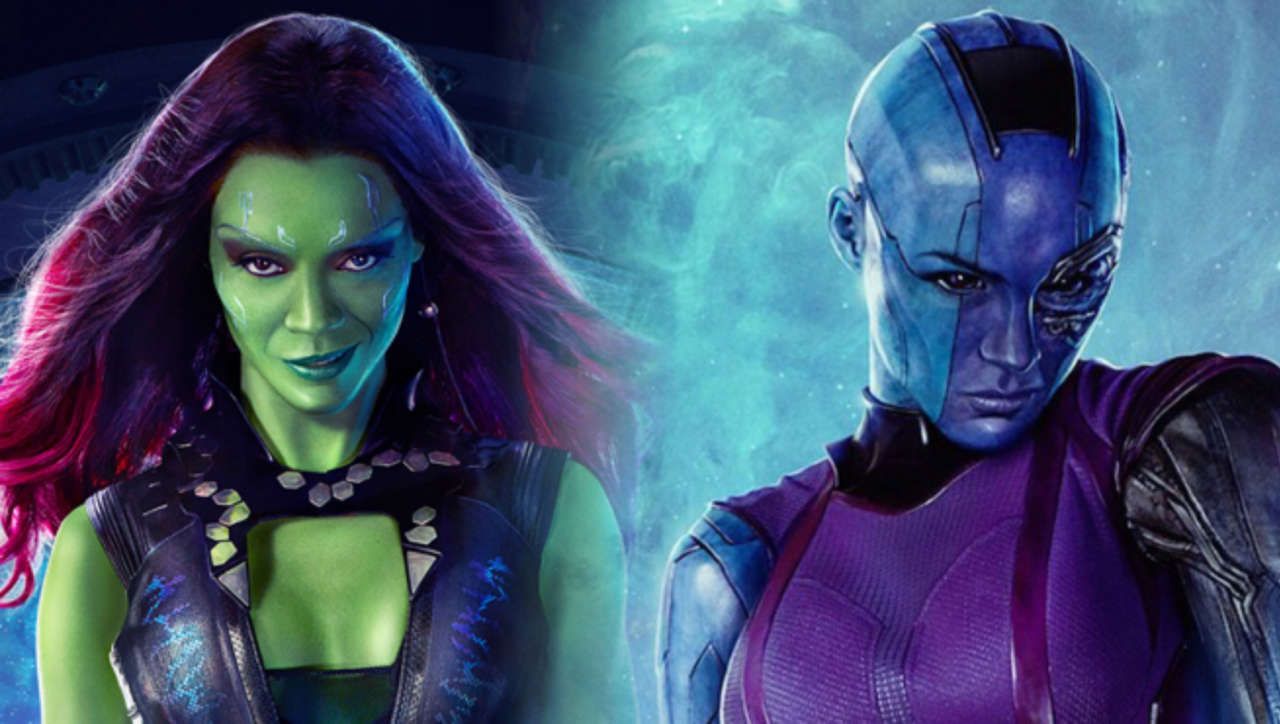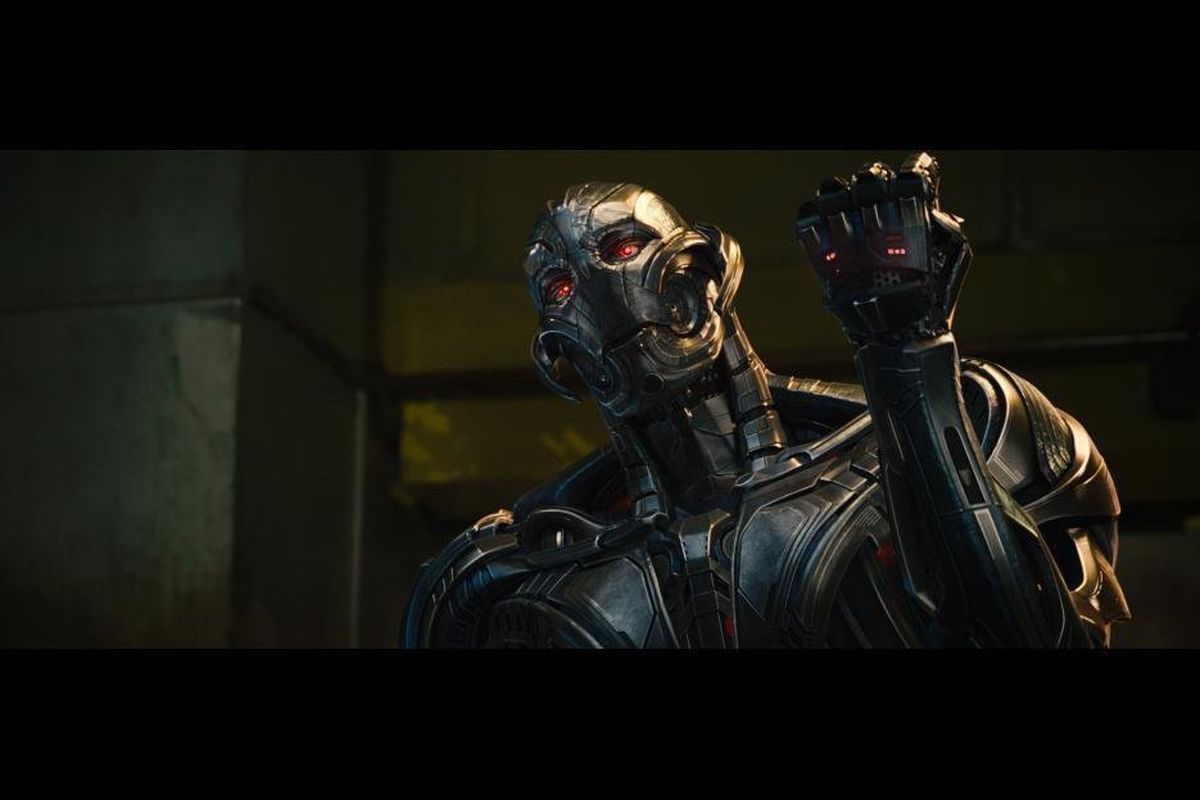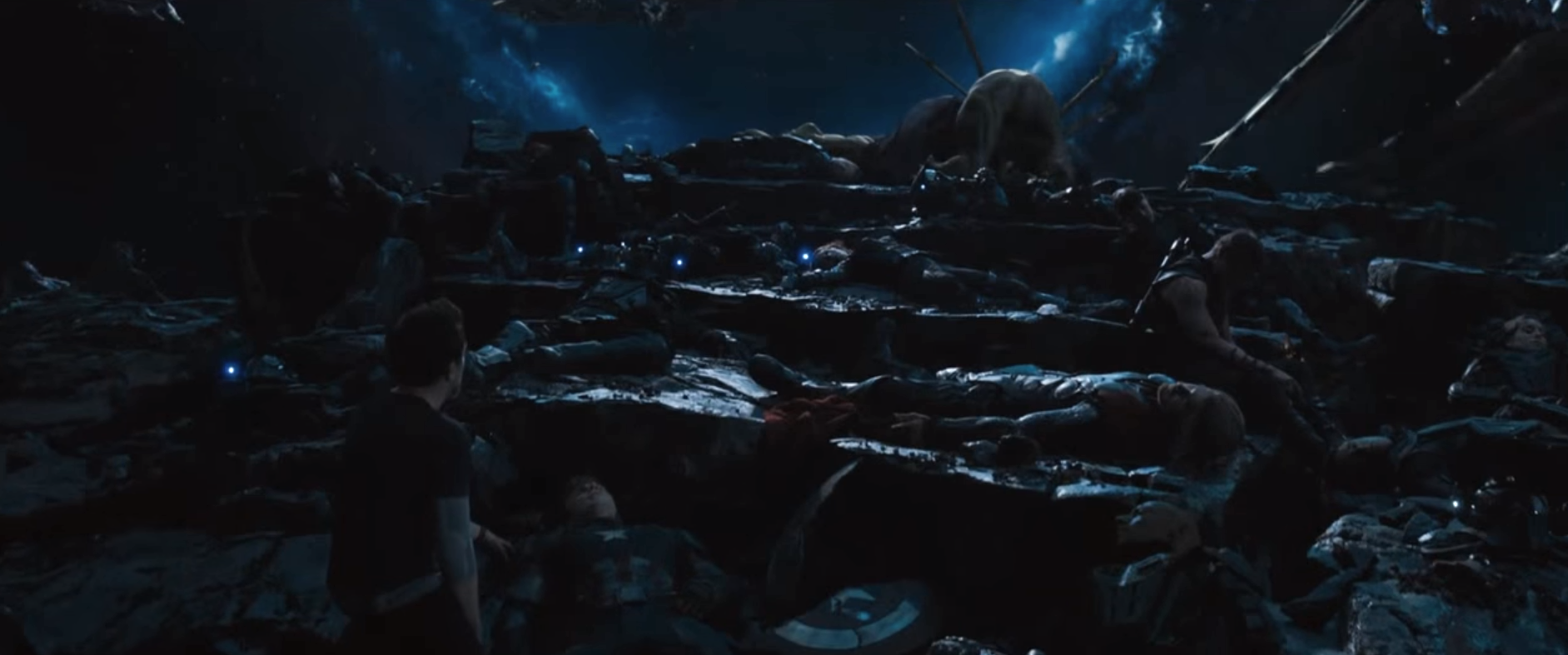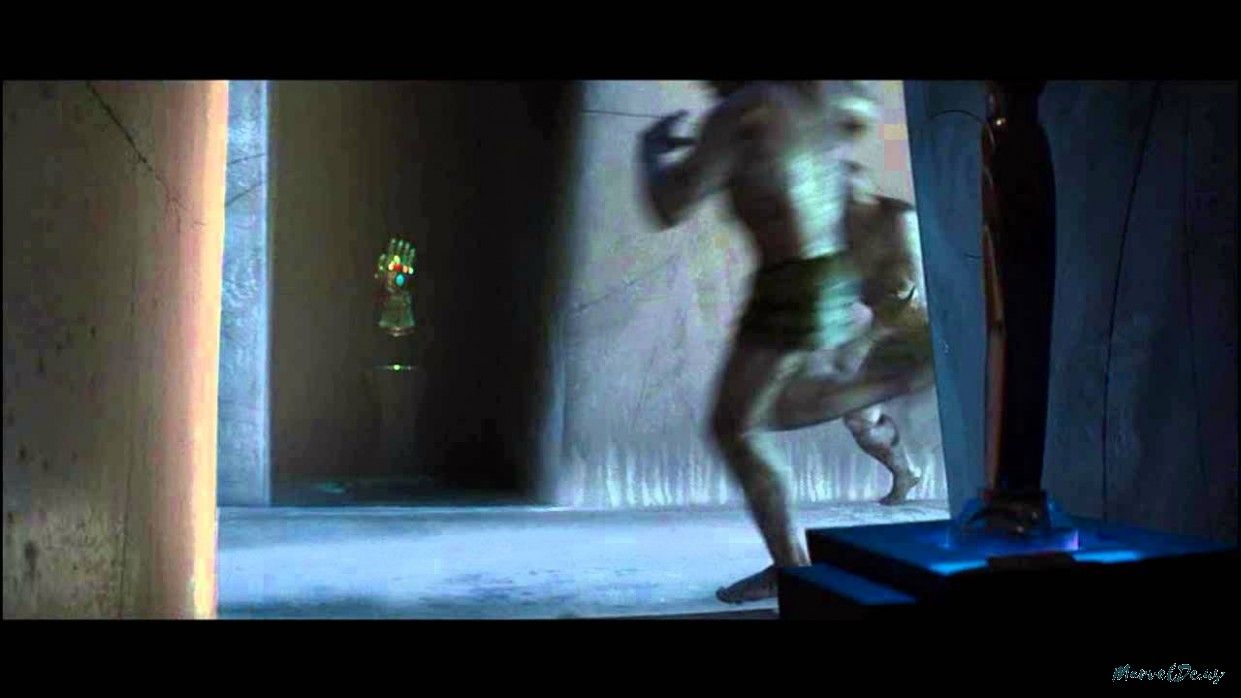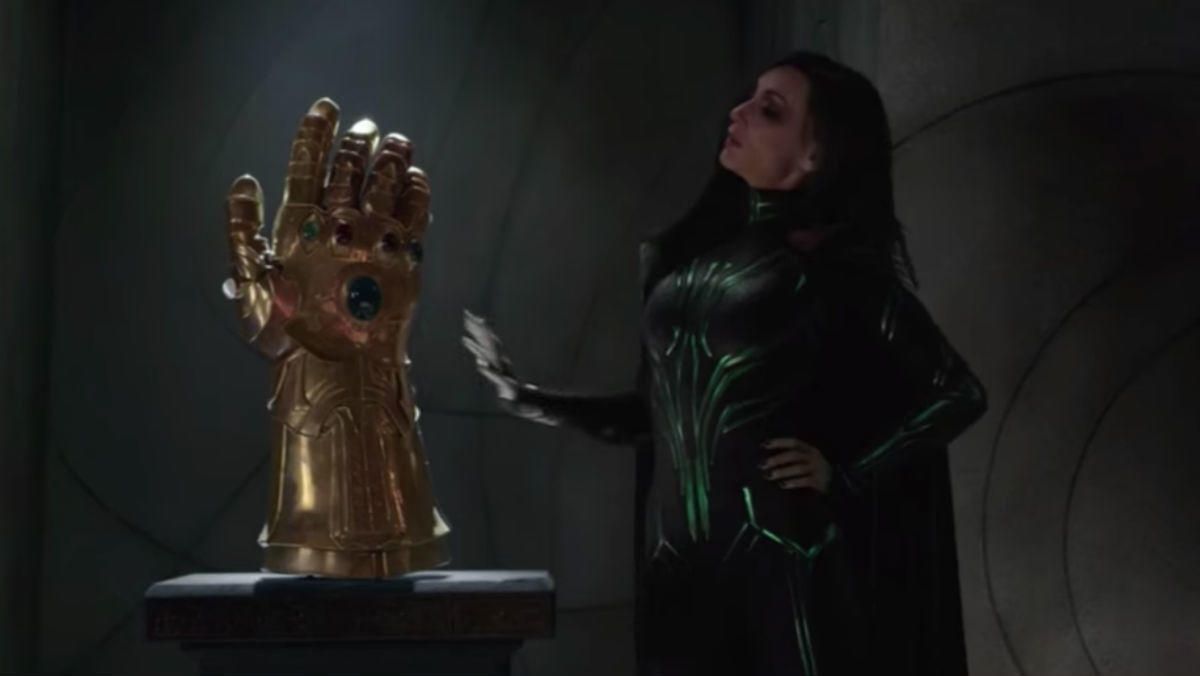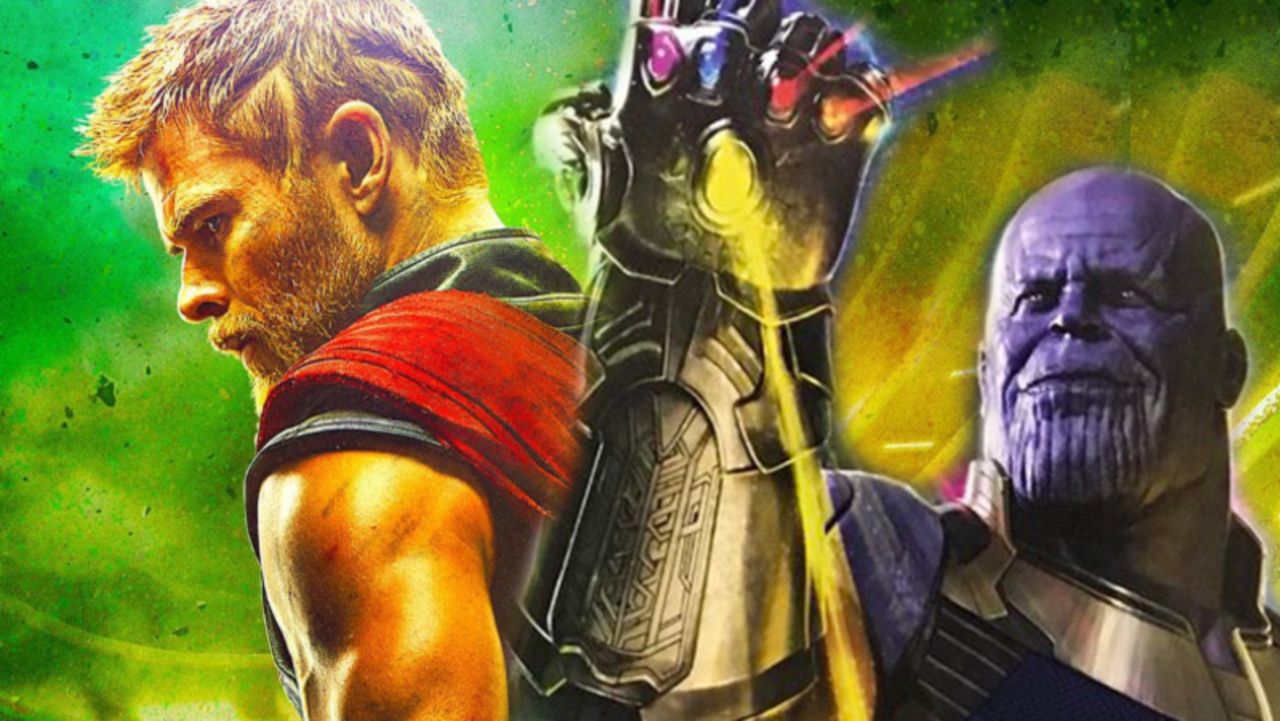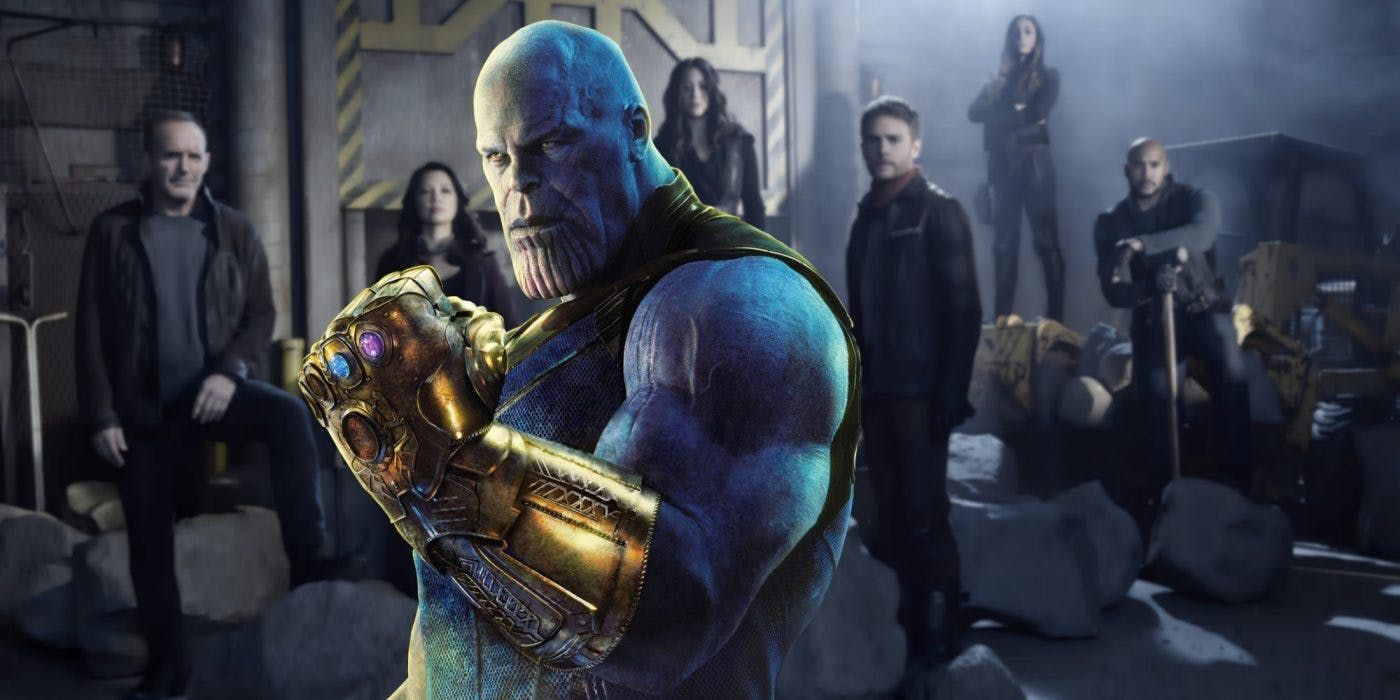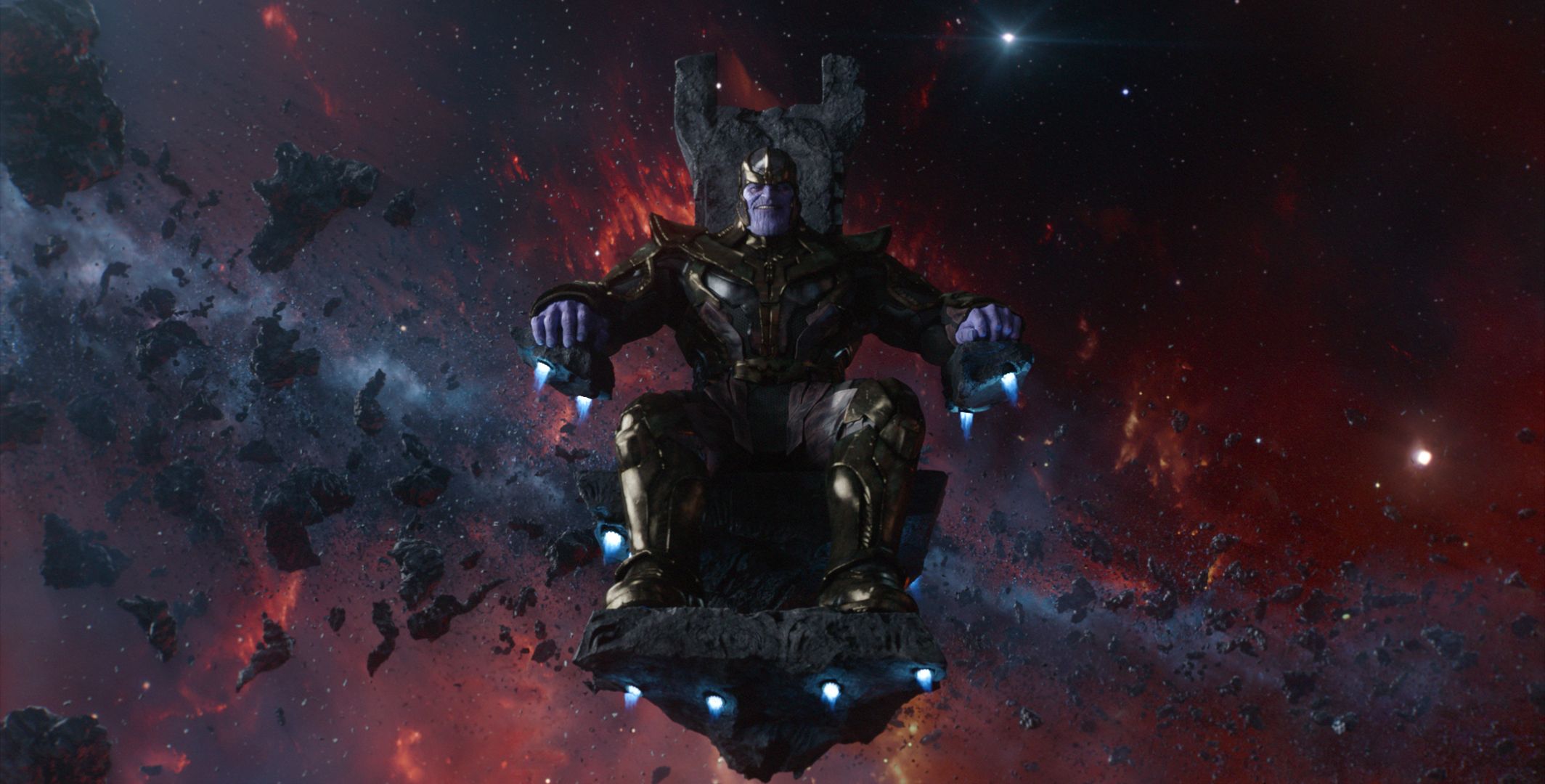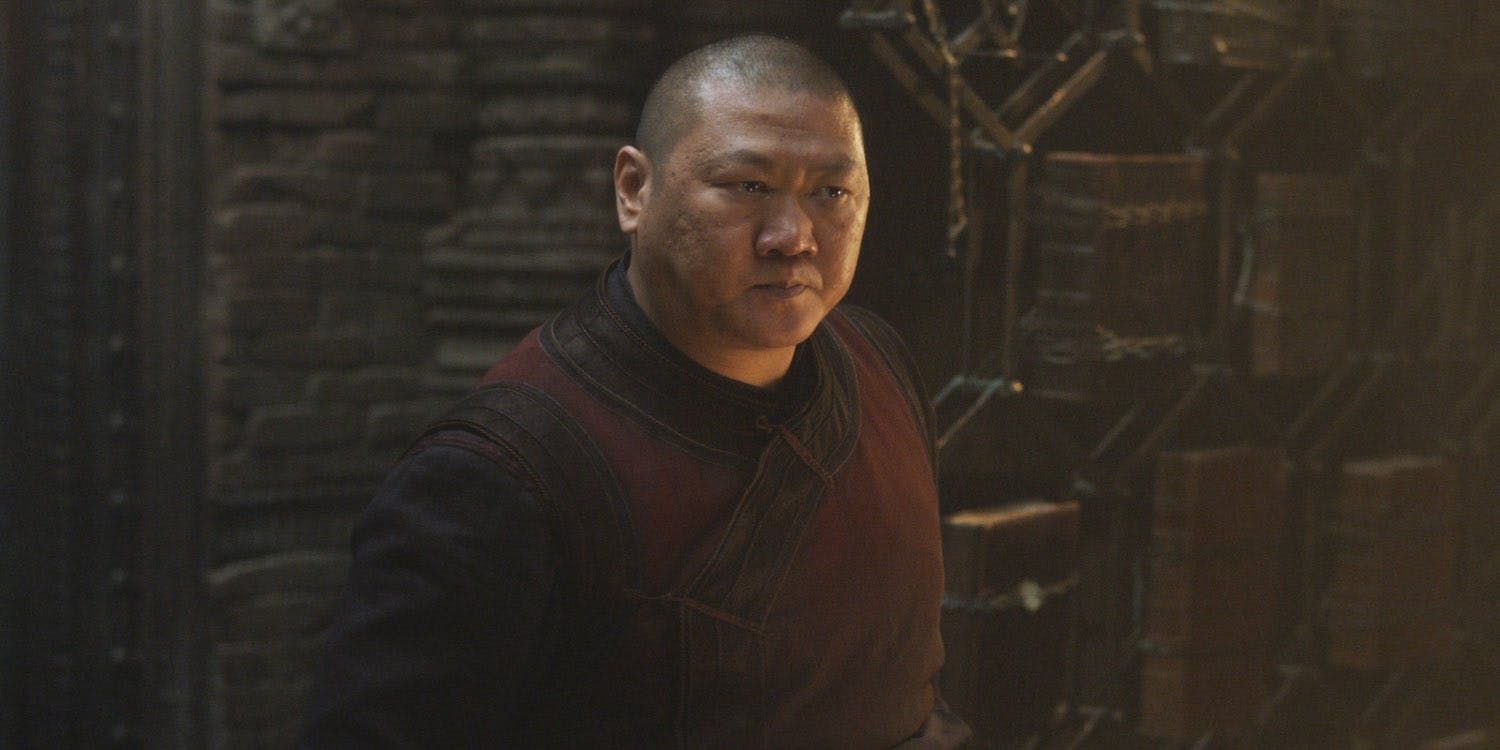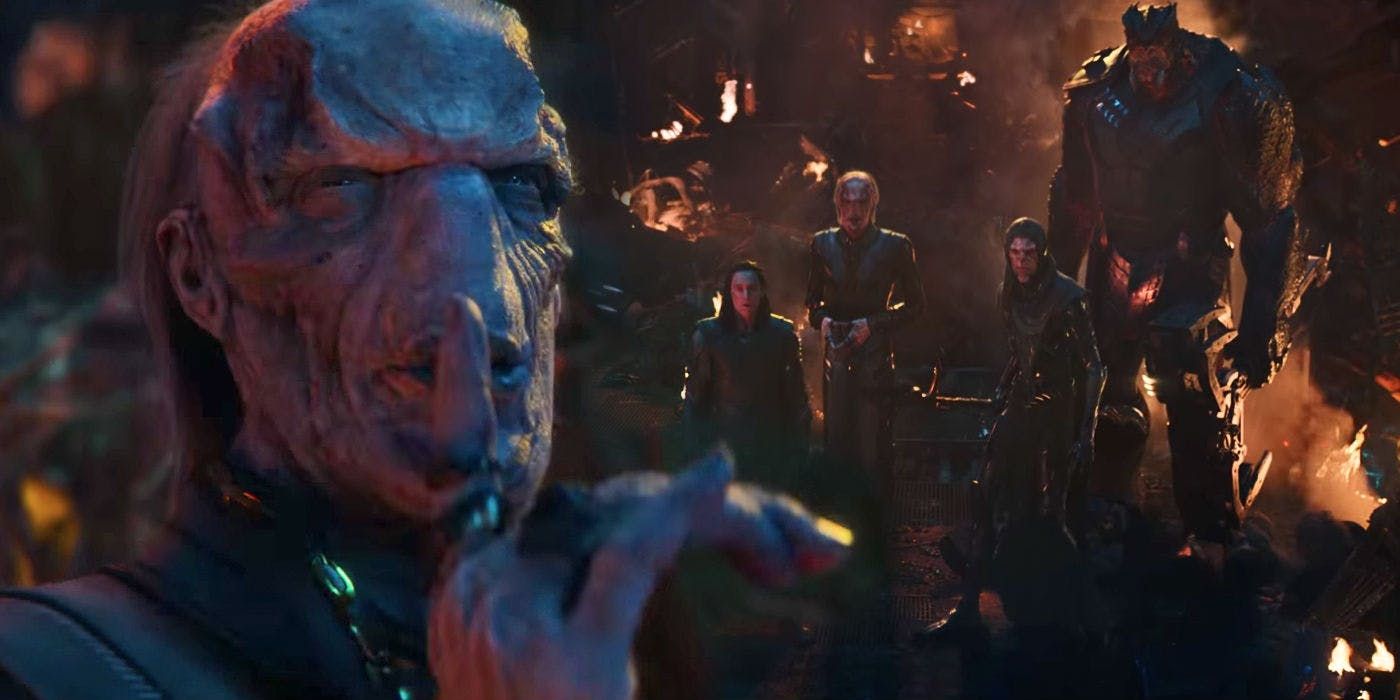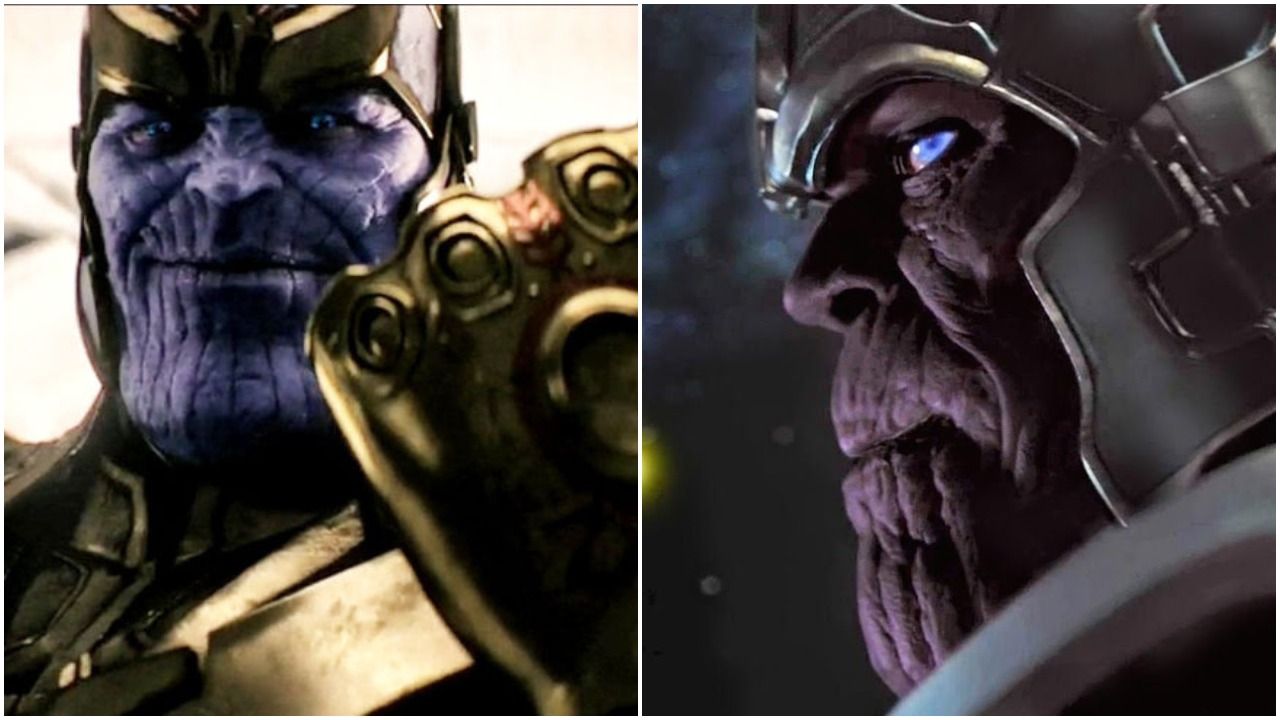Avengers: Infinity War was the first half of a climatic cinematic event. Not only does the film make The Avengers series a series (with more to come), it also expands the Marvel Studios portfolio to 19 movies. The film has enraptured fans and critics all across the world, with audiences praising Josh Brolin as the main antagonist, Thanos. The layered and emotionally complex character easily proved to be one of the best villains in the Marvel Cinematic Universe so far. While it might seem like the Mad Titan essentially appeared from nowhere — considering he had very little screen time before his assault on The Avengers — there have actually been numerous hints pointing to his impending arrival.
All of the pieces of the puzzle fell together, and Thanos's entire scheme was written between the lines of the MCU long before he obtained a single Infinity Stone. To find them, one must dive deep into the film anthology, searching every nook and cranny of each reboot, origin story, and spinoff that the comic book franchise has to offer. It is quite the endeavor, but once the depth of the superhero lore comes to light, one wonders why we did not see every part of Avengers: Infinity War coming.
These hints are best appreciated after seeing Avengers: Infinity War, and the movie has been in theaters for weeks, so be warned: full spoilers ahead. Here are 16 hints about Thanos that foreshadowed his role in Avengers: Infinity War.
16 Thor’s Vision
The reason that Thor recognizes the four Infinity Stones for their true identities is the vision he experiences midway through the film. After experiencing some mental trauma after hallucinating the end of Asgard, he seeks answers through clairvoyance by visiting The Water of Sight with his old friend Erik Selvig. What follows is a very specific breakdown of the Infinity Stones and their destined locations. In his vision, the Aether becomes the Reality Stone, the Tesseract becomes the Space Stone, the scepter becomes the Mind Stone, and the orb becomes the Power Stone. After their transformations, the Stones arrange themselves in perfect order on a glowing spectral image — one that is suspiciously shaped like the Infinity Gauntlet.
Due to its heavy-handed foreshadowing and its awkward presentation, Thor's "magic cave bath" was considered one of the worst parts of Avengers: Age of Ultron. Despite this response, it is clear that this sequence was a major clue about The Mad Titan's plight to retrieve the six singularities. This lengthy (albeit clunky) hint pushed the plot of The Avengers trilogy into Infinity War territory, and it helped show audiences what was yet to come. It took Thor four films to begin uncovering this mystery, but his brother Loki was, as always, several steps ahead.
15 Loki’s Secret Puppetmaster
When Loki invades Earth with a new army and a new weapon at his disposal, casual viewers might be uncertain of how he came to acquire such powerful tools. This is discussed in a conversation with The Other, an alien servant referencing a powerful master.
"You question HIM?" The Other asks Loki.
"He, who put the scepter in your hand, who gave you ancient knowledge and new purpose when you were cast out, defeated?" At the end of the first Thor film, Loki was lost in the universe, thought dead. This line reveals that he was saved by a new master, one that would set him on a course to conquer humanity with the Chitauri behind him.
Context clues and later reveals confirm this master to be Thanos. This proves that, since the beginning of The Avengers trilogy, Thanos really was making pawns of the heroes, pitting them against villains trying to claim the Infinity Stones and crush humanity. As Bruce Banner confirms in Avengers: Infinity War, "[Thanos] sent Loki," confirming Tony's worst fear. Tony even replies with, "This is it," calling back to his original prediction that the Earth's greatest threat is on its way, coming from the farthest reaches of outer space.
14 A Stark Premonition
One of the first characters in the MCU that begins to worry about a cosmic threat of apocalyptic proportions was Tony Stark, who feared another alien attack after the Chitauri invasion of New York. This comes to light in Avengers: Age of Ultron when Tony reveals his deepest concerns about the future purpose of The Avengers, including the nature of the threats they would have to face. He says, "A hostile alien army came charging through a hole in space...that up there? That's...that's the endgame."
Tony has a reasonable fear that the largest threat to the Earth is another attack from a foreign world. Temporarily, he was wrong; the numerous villains made their appearances before Thanos. In the grand scheme of things, Tony was dead right. Thanos's arrival in Infinity War brought consequences unlike anything the MCU had faced before, including (final spoiler alert!) ending half of all life in the universe. The battle among the stars truly is the greatest battle to be fought for The Avengers. In addition, this mention of "the endgame" appears once again in Avengers: Infinity War. Doctor Strange states "we're in the endgame now" after giving up the Time Stone to Thanos, which makes this hint even more effective in hindsight.
13 The Avengers Were Being Played
Tony Stark's warning seemed to ring true with some of his teammates, especially after the events of Avengers: Age of Ultron. Even though Thanos had yet to show The Avengers his face in all its purple, wrinkled glory, the newfound prevalence of the Infinity Stones in the MCU was difficult for Thor to ignore. Near the end of the film, the God of Thunder reflects on the cosmic conundrum laid out before him, and he determines that he should investigate it further. "The Mind Stone is the fourth of the Infinity Stones to show up in the last few years. That's not a coincidence."
"Someone has been playing an intricate game and has made pawns of us."
As the films progressed, it became clearer and clearer that an overarching threat was on the horizon. Tony was the first to recognize this, but Thor was the one that identified the Infinity Stones as the key to it all. He and the other Avengers were being played against petty threats, and against each other, time and time again. Inevitably, this dangerous game was meant to whittle down Earth's Mightiest Heroes, divide them, and make them easier to conquer in Avengers: Infinity War.
12 The Might Of The Power Stone
While the crisis of the Infinity War is put on hold by the events of Guardians of the Galaxy, fans of the MCU still get a taste of the power Thanos intends to wield, outlining some of the upcoming dangers. In a meeting with The Collector, Quill and the Guardians learn about the significance of the Orb, and hence, the Power Stone. They see visions of giant beings using the Infinity Stones as the weapons they could be.
"These carriers can use the stone to mow down entire civilizations like wheat in a field."
In the wrong hands (such as giant purple ones with golden gloves), the six singularities created at the beginning of time and space could easily be utilized to destroy huge populations of the known universe. The Power Stone's might is appropriately demonstrated throughout the movie, such as when Ronan easily tosses aside anyone trying to attack him, or when Quill, Gamora, Drax, and Rocket must channel its raw power between the four of them. At the time of Guardians of the Galaxy, no one yet knows why Thanos wishes to use such a destructive force. However, there are speculations elsewhere that correctly identify the Mad Titan's philosophy.
11 Nebula’s Past...And Future
In Guardians of the Galaxy Vol. 2, Nebula's character is essentially deconstructed on numerous occasions. Her experiences, her motivations, and her fears all stem from the complicated past she shares with her adopted father. After fighting with Gamora for a final time, the sisters furiously argue about their family history. Nebula reveals during the outburst that every time she lost a sparring session with Gamora, Thanos removed and replaced parts of her body. This explains Nebula's numerous robotic pieces, including her brain and her eye. It reveals the dangerous stakes of crossing Thanos; if he could express such brutality against his adopted daughter, he could express even stronger brutality against his opponents.
Like Drax and Gamora, Nebula, in turn, discovers where to shift her blame for the troubled history behind her. She declares that ending Thanos is her one true objective, and she can not join the Guardians until she sees that task done. This not only establishes her allegiance for Avengers: Infinity War, but it also develops Thanos's character even farther, despite the fact that he does not appear onscreen. With both of his daughters defecting from his forces, he would inevitably become desperate enough to finally act on his master scheme.
10 A Villain's Perfect Prediction
In hindsight, Avengers: Age of Ultron contained scene upon scene of Thanos foreshadowing. One statement in particular, made by the A.I. construct Ultron, was eerily similar to the mindset of Thanos in Avengers: Infinity War. He states, "When the Earth starts to settle, God throws a stone at it, and believe me, he's winding up." While Ultron (and many audiences) believed that he himself was the metaphorical meteor, the true to shake up a settled Earth was Thanos.
Thanos readily believed that--because countless planets around the universe are vastly overpopulated--he needed to collect the Infinity Stones and annihilate half of all life in existence. As he reveals in Avengers: Infinity War, his home world, Titan, settled for complacency. Consequently, their growing population consumed their shrinking resources, and Titan went extinct. Thanos believes that Earth and other planets will inevitably suffer the same fate, so this motivates his actions in the film. It is poetic, if a bit depressing.
Ultron recognized this philosophy perfectly, believing that a catastrophic event was not only unavoidable, but necessary for a population's sustained survival. Ultron's statement perfectly foreshadows The Mad Titan's past, most likely because Ultron's creator witnessed the universe's potential future in a disturbing hallucination.
9 A Twisted Fate
Perhaps the most haunting hint of the Thanos's impending arrival comes from the opening sequence of Avengers: Age of Ultron. The Avengers finally recovers the scepter from the remaining agents of Hydra when the Wanda Maximoff, the Scarlet Witch, uses magic to manipulate Tony Stark's mind. While under the influence of her curse, he sees a world in which the Chitauri returned after the Battle of New York and laid waste to most of his comrades. He even has a heartbreaking moment with Steve Rogers, if only just before losing him too.
"You could've saved us," Steve laments. "Why didn't you do more?"
Without a doubt, this hallucination acts as a catalyst for Tony's preemptive panic. It warns of an alternate reality in which The Avengers finally crumble. Unfortunately, this is highly indicative of the conflict ahead, since the nightmare is destined to come true in a similar form. This hint of Thanos's destructive mission and the fallout that follows is unquestionably dour. In this moment, Tony is forced into a state of unhinged paranoia in his fear of losing his friends. Reflecting on this form of foreshadowing makes the ending of Avengers: Infinity War all the more disheartening.
8 The Infinity Gauntlet Made A Cameo...Kind Of
The very first hint of Thanos' presence in the Marvel Cinematic Universe comes in the form of a fleeting Easter Egg. Odin's vault on Asgard held a plethora of powerful artifacts, including the Casket of Ancient Winters, which is the first film's MacGuffin. In just a few brief frames, the Infinity Gauntlet can be spotted in the background of the vault. The appearance of Thanos' dreaded weapon might appear to be a harmless nod to the larger universe yet to be revealed, and this would consequently spark excitement in the eyes of comic fans, but eagle-eyed viewers will notice some oddities about the item.
First of all, the Gauntlet appears to already be holding the Infinity Stones, completely contradicting their confirmed locations in later films. Second, this Gauntlet is built for a right hand, even though the Gauntlet was (and still is) famously worn on the Mad Titan's left hand. These errors make the item's first appearance feel either like an intentionally misleading trick on the part of the MCU, or like a genuine mistake. Regardless, the problem dulls a lot of the excitement that the cameo could have generated. Thankfully, the filmmakers discovered a way out of the issue with a satisfying payoff.
7 Hela Resolved the Issue
For better or worse, the Thor franchise doubled down on its comedy when Thor: Ragnarok rolled into theaters. The film felt like an effort to correct the course of the trilogy at its closing moments by lightening tones, tying up loose ends, and correcting continuity errors. When Thor's estranged sister, Hela, arrives on Asgard and performs a hostile takeover, she strolls through Odin's vault, searching for the most dangerous artifacts to aid her conquest. In her search, she stumbles across the right-handed Infinity Gauntlet from the first Thor film.
She loudly declares the glove a "Fake!" and shoves it to the ground.
The moment is brief, but brilliant. In a hilarious gesture, Thor: Ragnarok pokes fun at its origins, provides development for its characters, and solves one of its grievances. Fans no longer had to wonder if there was actually a second Infinity Gauntlet in play. Hela's actions helped streamline the course of the universe by eliminating unnecessary variables. The crowd-pleasing moment caused many fans to celebrate, if only for a time. Narrowing down the number of Gauntlets in the MCU also entailed that there was nothing yet revealed that could match Thanos's power, which in turn makes his arrival all the more ominous.
6 The Failed Quest
In the opening minutes of Thor: Ragnarok, Thor delivers a monologue to about himself and his recent whereabouts. Like most bits in the movie, it is played for laughs, since he delivers the monologue to a decaying skeleton. It definitely works as a joke, but it also holds a few cheeky hints. First, Thor mentions that he scoured the cosmos for "magic, colorful Infinity Stone things." This is obviously a continuation of his character arc in Avengers: Age of Ultron, in which he heeded the warnings presented to him through his vision. He says that he did not locate any of the Stones (which may be a continuity error, since he says in Avengers: Infinity War that the Power Stone was on Xandar), but he did find something else.
"I came across a path of death and destruction."
This frequently overlooked line signals that someone left a trail of damage in their wake, and that trail collided with the possible Infinity Stone locations. The film never identifies who was carving such a path, but there are three candidates. It could have been Surtur, since he wished to destroy Asgard. It could have been Hela, for the same motivation, but the individual most likely to be traveling the cosmos along the trails of Infinity Stones is Thanos, considering his mission to obtain them was already underway.
5 Not Even The Kree Are Safe
To show how astronomical the impact of Thanos's actions would likely become, the MCU stretched its hints to its ABC television series. The Kree aliens, set to play a large role in Captain Marvel's 2019 debut, already have a place on Agents of Shield. There, they have heavily impacted numerous plot threats. In episode 20 of season 5, "The One Who Will Save Us All," the season's villain Graviton is seeking to strike a deal with the Kree when the aliens announce that Thanos has begun his assault on the planet. Graviton considers joining The Avengers to fight the battle, but the Kree declare Thanos's strength "unrivaled."
The manner in which the Kree label the fight against Thanos a blatantly futile effort is a testament to the Mad Titan's power. It further cements him as the ultimate threat of the universe, and the most dire of fates for The Avengers. If a powerful alien race could not even hope to fight the Infinity War, then humanity's chances seem nonexistent. With the addition of this Agents of Shield hint, Avengers: Infinity War is foreshadowed as the first half of a climactic finale for The Avengers franchise, and the MCU as a whole.
4 Shadowing The Guardians
Guardians of the Galaxy was a major step in bringing those extraterrestrial threats to the MCU, so naturally, a huge hint for Avengers: Infinity War comes in the form of actual screen time for the Mad Titan himself. In his first intimidating appearance among the Marvel heroes, Thanos meets with Ronan the Accuser and reveals the plan to have Ronan retrieve the Orb — a container for the Space Stone. In doing this, Thanos begins to fulfill the prophecy that Thor foresees in Avengers: Age of Ultron, collecting the Infinity Stones for his Gauntlet.
This was delayed, of course, by Ronan's betrayal. Instead of delivering the Orb to Thanos as promised, Ronan claims the Space Stone for himself, only to be stopped by Peter Quill and an epic dance-off to save the universe. Still, this works as a major Thanos hint, because it further extrapolates on his operations. It establishes him as a majorly villainous presence, with a multi-pronged plan that spans across space and time of the MCU. Though he still maintains some distance from the Guardians, his very existence still motivates both Gamora and Drax to join the team, since both of them wish to see him struck down from his pretentious throne.
3 Wong’s Cryptic Message
At the end of Doctor Strange, after Kaecilius is defeated, Wong and Strange outline their plan to rebuild the New York Sanctum Sanctorum and protect the multiverse from magical threats. In this discussion, Wong reveals that the artifact called Eye of Agamotto (a rather fashionable necklace that Strange always sports) actually contains the Time Stone--the fifth Infinity Stone to appear in the MCU. When Strange expresses confusion at the comment, Wong is amused, observing, "You have a gift for the mystic arts, but you still have much to learn."
The reason why this clue works so effectively is because of its expert use of irony. In his comment, Wong is intending to mock his fellow sorcerer for ignorance. This is ironic, because while Strange's ignorance keeps Wong entertained, there are some aspects of the multiverse that he also does not foresee. On the surface level, the jest is a reference to the cosmic side of the MCU, encouraging fans to anticipate Doctor Strange's eventual inclusion in the Avengers' story, since he is certain to play a pivotal role. However, he is also unintentionally referencing more sinister mysteries. Specifically, the comment heralds Thanos's arrival on Earth, a fate that he and the audience should both dread.
2 Some Major Characters Revealed
One unexpectedly important piece of Avengers: Infinity War was the villainous Black Order. These children of Thanos work to do his bidding throughout the entire film, which usually meant battling the Avengers and retrieving the Infinity Stones for their places in the Gauntlet. While it might seem like the characters appeared out of thin air, they were actually referenced by Nebula in the first Guardians of the Galaxy film. In one of her fights with Gamora, the cyborg says, "Out of all our siblings, I hated you least."
It had already been established that Gamora and Nebula were both the adopted children of Thanos. By way of the transitive property (and by way of basic logic), it can be inferred that the "siblings" Nebula mentions are the remaining children of Thanos. Ebony Maw, Proxima Midnight, Cull Obsidian, and Corvus Glaive are all frightening, unlovable creatures, so Nebula's aversion to them seems completely reasonable. All of this character-building was set up by a tiny snippet of conversation in Guardians of the Galaxy, and it emphasizes how efficiently the dialogue of the Marvel movies can work. There is even more depth to the relationship between Nebula and Thanos, but this is only revealed in the Guardians sequel.
1 The Iconic Post-Credits Sequences
It is no secret that Marvel Studios pioneered the use of the post-credits teaser. To capitalize upon all the foreshadowing, all the buildup that brought the MCU to Avengers: Infinity War, the Marvel films used their post-credits scenes to brilliantly streamline the entire course of the series straight to Thanos's arrival. Combined together, they form the bulk of the narrative just by themselves. The post-credits scene for The Avengers revealed that Thanos was the mastermind behind the Chitauri invasion, seeking to battle humanity for the Infinity Stones. The post-credits scene for Avengers: Age of Ultron was the signal that Thanos was ready to use the Infinity Gauntlet and make his move on Earth's Mightiest Heroes, who were already set to be divided and conquered.
In the final hint for Thanos's arrival, his ship approaches the last of the Asgardians after the conclusion of Thor: Ragnarok. The final image of his arrival indicates that the Mad Titan is ready to raid the ship, take the Space Stone, and finally battle The Avengers himself. This trifecta of post-credits sequences worked as a prologue for Thanos's story, ushering in a new era to the Marvel Cinematic Universe, one that is forced to see a twisted version of a balanced universe.

